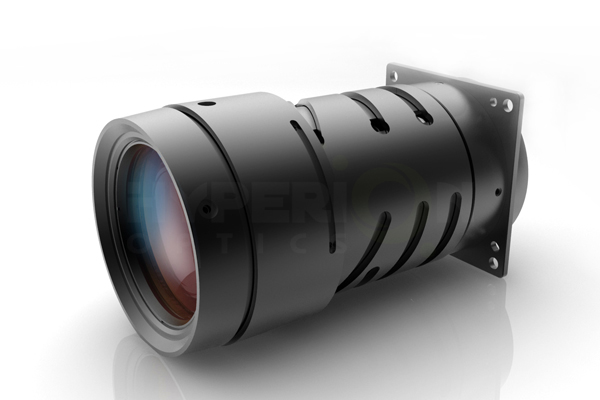By adjusting the conic constant and aspheric coefficient of the lens surface, aspheric lenses can be designed to minimize aberrations to a maximum extent. The most notable advantage of aspheric lenses is their ability to correct spherical aberration, an optical effect that causes incident rays of light to focus at different points, resulting in blurring when forming an image. Spherical aberration is commonly found in spherical lenses, such as plano-convex or double-convex lens shapes, but aspheric lenses focus light to a small point, which relatively causes less blurring and improves image quality.
Firstly, use an aspheric milling device to grind the aspheric surface. Then install the milled workpiece together with the base on the polished workpiece shaft, and polish the surface of the aspheric lens with an elastic polishing mold. For the third time, the polished aspheric lens needs to be polished again on the machine, and all polishing parameters are set exactly the same as the previous time. As the current surface error complements the surface error after the last polishing, the polished error is compensated to some extent. However, changes in surface shape also affect polishing results, so after polishing, the surface is close to the design surface accuracy, but there is still a certain amount of residual error.
Finally, to eliminate residual error after polishing and further enhance surface accuracy, a small polishing tool must be used for correction to achieve the final requirements. As the surface is already very smooth at this time, and only a little has been removed, the grinding wheel can be ignored during the polishing process, which has little effect on the polishing accuracy and can greatly shorten the polishing time.
Aspheric lenses allow optical designers to use fewer optics to correct aberrations than traditional spherical optics because aspheric lenses provide more aberration correction from their multiple surfaces than spherical optics. For example, in a zoom lens typically using ten or more lens elements, a few spherical lenses can be replaced by two aspheric lenses to achieve similar or better optical performance, while reducing the system size and possibly lowering the overall production costs. Therefore, sometimes it is a better choice for your application.
In addition, there are various manufacturing processes for aspheric lenses, including precision polishing, diamond turning, molded polymer aspheres, and injection molding. Choosing the appropriate processing method brings high cost-effectiveness. We hope our introduction can provide you with more choices.


 Call us on:
Call us on:  Email us:
Email us:  R&D Center: Aoti Street #68 Building 4A 405 International R&D park, Nanjing
R&D Center: Aoti Street #68 Building 4A 405 International R&D park, Nanjing









 English
English  cn
cn  de
de  es
es  fr
fr 


